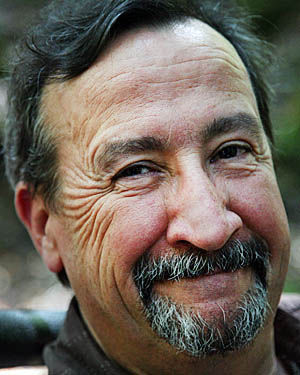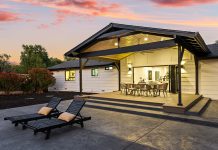A sea change is underway in the medical field. The Healdsburg Medical Plaza, a group of offices that share a medical campus with Alliance Medical Center and Healdsburg District Hospital, got permission from the city last week to change its zoning to allow non-medical office uses.
Why? Because they can’t fill all those offices with doctors, dentists and therapists. The era of private practice doctors in small offices might be coming to an end, as young docs affiliate with large groups, like the ever-growing Kaiser Permanente and others.
Jim Carroll, a local family practice physician, told the Healdsburg City Council last week: “The doctors you see working in this area may be the last independent doctors you will ever see.”
A wave of local doc retirements began a few years ago, and were one reason why Healdsburg Primary Care ended up affiliating with the hospital. At last week’s council meeting, even Dr. Steve Vargas, who always looks youthful and handsome, was showing salt and pepper in his hair.
The council, eager to help the local medical folks and to keep those offices filled, OK’d the plan to rezone. Among the uses that will not be allowed under the modified zoning: no retail and no cannabis.
If you’re marking your calendar or sharpening your arguments for the big issues, note that — at press time — the city council is scheduled to discuss hotel zoning on Monday, Aug. 20 and is scheduled to discuss zoning for firearms sales on Sept. 4. Hotels next week; guns right after Labor Day. That should make for a couple of long meetings.
Speaking of long meetings, that’s my specialty. Sometimes, people ask me why I sit through every city council meeting until the end, but don’t always write a story.
Two reasons: First, our role as a watchdog on government demands that I be there; we monitor local government for you and use our best judgment on what to tell you, along with everything else we deliver each week.
Second, I’m not a transcriptionist. If you want to know every little move they make, watch the video, read the minutes — or best of all — come to the meetings. But bear in mind, this council does not make decisions quickly and I’m not about to give you 800 words that end in: “and the council did not make a decision.” When something newsworthy happens, I promise to tell you. That’s my job.
There are small things that happen at city council meetings that don’t rate a news story, but are noteworthy. The public works department made a presentation last week and a few numbers stood out.
The City of Healdsburg maintains 61 miles of water lines, some dating back to 1906. There are 4,433 water connections to homes and businesses and 3,000 additional connections (such as fire hydrants).
What do we do with all that water when we’re done with it? There are 52 miles of sewer lines, some also more than a century old, with 3,900 sewer laterals (the pipe that goes to your house) and 1,300 “additional sewer apparatus” such as manholes and cleanouts.
There’s more. The city maintains 45 miles of paved roads and takes care of Foss Creek and storm water collection lines, ponds, basins and such.
This all reminds me of the late Roy Lowe, who ran public works for the city until he retired in 1988, then stayed active as a volunteer with the fire service. Known as “515” (his old emergency responder code), Roy rolled on hundreds of fire and emergency calls and his photos and video were always available to the fire departments.
Roy knew the city public works infrastructure inside and out. In addition to his reliable memory, he had worn paper maps of public works and could be counted on to show up at a water or sewer leak with an old map, to help a young public works guy locate a pipe or a shutoff valve.
Roy died last year, at the age of 90. He’s missed.
As a Californian, I’m supposed to believe in social engineering. I love my Obamacare, I support tobacco-shaming and I recycle vigorously, but I can’t get excited about carpool lanes.
The concept is to reward motorists who drive electric cars or buddy up and drive two or more during commute hours. I haven’t read the studies, but from all appearances, they don’t work. It’s fun to zip along in the carpool lane on the rare days my sweetie and I drive south during a weekday, but most of the time, the lanes are empty while the rest of us slog along staring at the signs threatening us with $481 tickets for driving on asphalt we paid taxes to lay.
The 1990s-era plan doesn’t take into account our increasingly mobile society; the way people change jobs, work flexible hours or commute because of the high cost of living in small towns.
The system seems to be an artifact from our idealistic days, when the green revolution was new and we were hopeful about change.
Now that we know that DC is determined to strip mine and clear cut most of the nation, why bother with idealism? What we need are torches and pitchforks.
Ray Holley is grumpy this week. He can be reached at ra*@********st.com.









